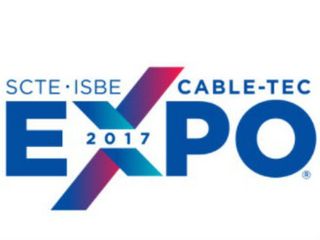Cable-Tec Expo: Machine Learning Taps Plant and Home

Denver -- The cable industry has no lack of network data. The challenge, according to panelists who spoke at a Cable-Tec Expo workshop on Wednesday (Oct. 18) in the Customer Journey track, is to use that information about the home and plant in the right way.
The common goal is better customer experience. “My job is to capture as much data around the customer as possible,” Comcast vice president of personalization Martin Marcinczyk said, “and to leverage that data to provide context for the workforce, products and customer service.”
To illustrate his point, Marcinczyk shared a video of Comcast going beyond normal operations in support of customers recently upended by disastrous weather. But he also acknowledged the deluge of information that Comcast itself faces: more than 250 pieces of data around the delivery platform multiplied millions of times. “Our customers interact with us a billion times a day,” he said. “And we don’t have one system, we have hundreds.”
Read More: Complete coverage of Cable-Tec Expo 2017
Comcast appears to be making headway in leveraging these massive amounts of data. “We have so much information,” said Marcinczyk, “we can begin to predict when we’ll have successful events -- or not so successful events.”
The vision of proactive maintenance is compelling, but progress is not universal. As a reality check, Gary Cunha, senior director, product management at ARRIS, shared input received earlier this year from one tier 2 operator: “We’re still reactive; when a spike in calls hits the call center, we really have no idea what caused it.”
Step one is a change in mindset. Cunha recommended thinking of the call center not as the first, but the last point of contact, like the goalkeeper on a soccer team. ‘Think of operations as a soccer team,” he said. “There are about seven opportunities to prevent the goal.”
Other winning combinations include optimized technical workforces, proactive home and network management and subscriber self-care. Cunha shared results from two cases. One involved analyzing the root cause of open work orders that were generating a flood of calls. The solution led to a reduction in repeat truck rolls and fault-based service calls, and a $1.6 million savings in one quarter. In the second case, assisting a large European operator burdened with a surge in WiFi-related service calls, ARRIS set up a program for telemetry analysis and evaluation of channel utilization, access points and client received signal strength indication (RSSI).
Customer self-care can be a big win, too. Cunha said the top two reasons for WiFi-related service calls, accounting for 30 percent in this category, are simply requests for SSIDs and passwords. He called that situation “a prime opportunity to exploit customer readiness for technology.”
The industry’s R&D arm has also been analyzing access network data. CableLabs Principal Architect Karthik Sundaresan updated workshop attendees on the organization’s efforts “to learn from that data and take concrete actions or steps to make an experience better.”
Like Cunha, Sundaresan said the right mental framework was essential. “Before I create a machine to do something, first I have to visualize” he said. “Can I understand it?”
Sharing graphical representations of DOCSIS 3.1 modulation error ration (MER) data from Comcast, Sundaresan discussed individual cable modem performances, some less stable than others. About one, he noted: “It’s nice for about two weeks, then something happens and MER drops by about 3dB.”
Plotted by dB level, frequencies and time, these three-dimensional graphs - looking in one case like the Himalayas and in another like the Grand Canyon - revealed much about individual modems. But that kind of analysis only goes so far. “You can see where this is leading,” he said. “Machine learning is the end goal.”
To that end, Sundaresan talked about discovering common characteristics across pools of modems and using algorithms such as a sliding median and threshold comparison for initial anomaly detection. Training a predictive model also involves data labels, such as (in the case of modems) wide, sharp, roll-off and tilt.
Sundaresan described the trained model as a “convolutional neural network,” or a way to understand what each of several layers is learning and then to remember that learning for future prediction. He said the CableLabs predictive engine was built open source, in Python, and with Keras as the neural network API for deep learning systems such as TensorFlow, CNTK or Theano.
Multichannel Newsletter
The smarter way to stay on top of the multichannel video marketplace. Sign up below.










